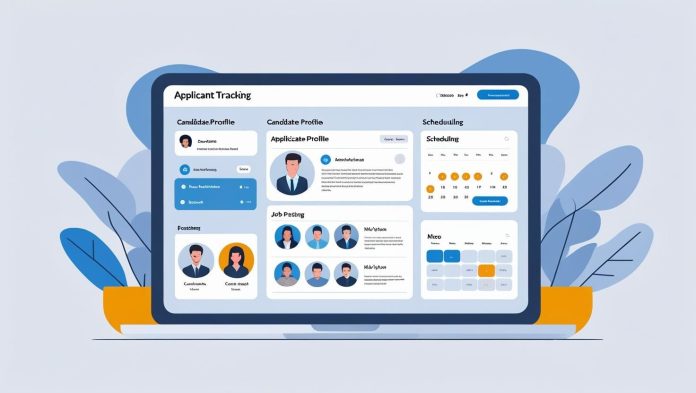Some studies have discovered that nearly 99 percent of the Fortune 500 Companies rely on the Applicant Tracking System for their regular hiring needs. This implies that even the best companies widely recognize the enormous advantages of this technology as one of the powerful tools of a structured hiring strategy.
But, does it mean that only bigger organizations are the only ones gearing to capitalize on these systems?
The adoption of ATS software by smaller businesses has accelerated because of the benefit of cost reductions and flexibility brought about by the emergence of cloud technologies. Currently 70 percent of big organizations and 20 percent of midsized and small organizations are employing Applicant Tracking System in order to have an organized recruitment process.
ATS today are much more modern, with the majority being offered as Software as a Service (SaaS) compared to their earlier versions. A recent breakthrough in AI and ML is expected to cause a large percentage of companies to implement AI-driven ATS by the end of this decade.
In this article we are going to discuss the diverse advantages of an ATS, the reason why you need one and how to select the best ATS program to suit your business.
What is an Applicant Tracking System?
An Applicant Tracking System is a recruitment software that helps businesses save substantial time and money by automating the end-to-end hiring process. It is a robust tool that helps recruiters to identify and hire the right talent through its built-in capabilities to collect and organize candidate information, match and score profiles and oversee candidate progress at every stage of the hiring cycle. This software is mostly available in an integrated Human Resource Management System (HRMS) or as an exclusive recruitment solution through a SaaS model.
Who Uses an Applicant Tracking System?
Use cases of ATS solutions span across a wide range of companies and industries, catering to unique recruitment needs of each user group, such as
- Established firms with above-average application counts on each job opening.
- Growing companies venturing on new projects with a mass recruitment drive.
- Small and Medium-Sized firms aiming to optimize their recruitment process and stay on top of competition.
- Recruitment firms willing to expand their candidate pool for sourcing and delivering top talent to their clients.
- Industries demanding specialized skill sets such as Academics, Healthcare, Technology and AI, Energy, E- Commerce, Finance, etc.
Within an organization, the primary users of an Applicant Tracking System are:
- Recruiters: Considered the main users of the platform. They utilize the tool to post jobs, screen resumes, track candidates and communicate with applicants.
- Hiring Managers: Collaborate with recruiters to track progress of open roles, manage approvals of job postings, review shortlisted candidates, provide interview feedback, and make hiring decisions.
- HR Professionals: Make use of the platform for compliance, ensure policy alignment, and analyzing hiring metrics.
- IT Administrators: Manage technical setup, user roles, access, security and integration with other HR or Business Software.
Is an Applicant Tracking System (ATS) and Candidate Relationship Management (CRM) the same?
No, both the recruitment software’s differ in their approach.
An ATS automates the hiring process, making it easier to track and manage candidate data, resumes and job openings.
CRM software assists in building and maintaining relationships with candidates and improving the chances of attracting talent from a wider talent pool.
Key Features of Modern ATS
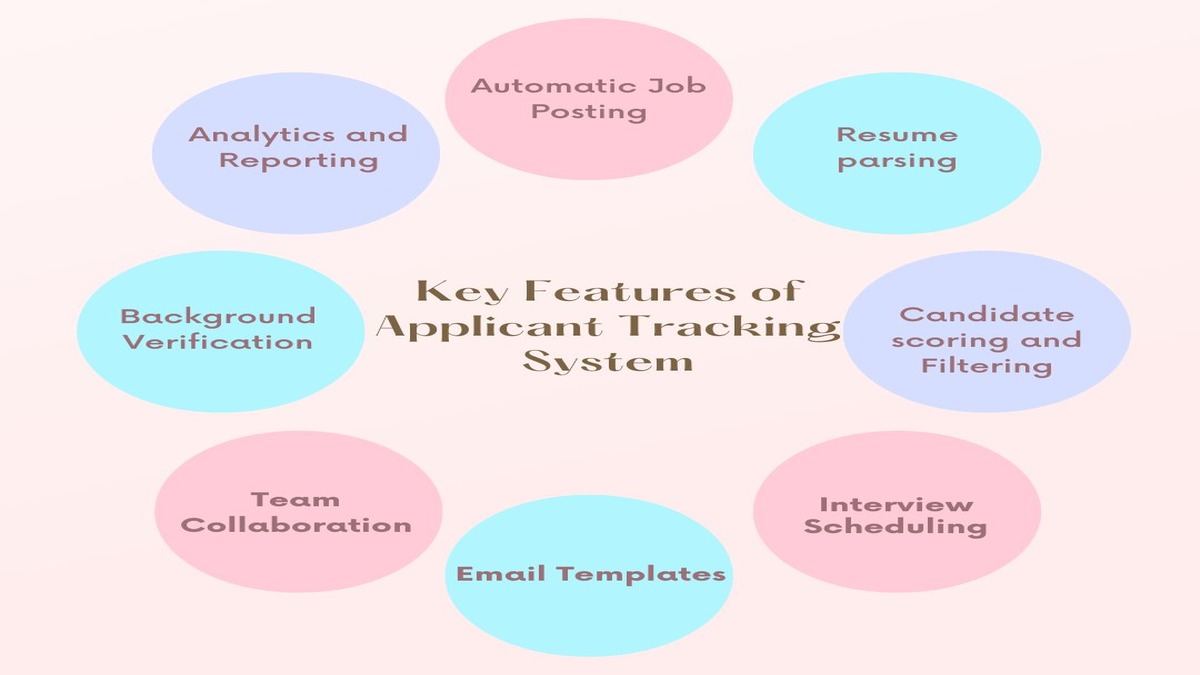
Today, Applicant Tracking Systems have moved past its role as a basic repository of resumes. Modern ATS platforms come equipped with many powerful features designed to streamline the entire recruitment process, helping businesses attract, evaluate, and hire the right talent more efficiently. Some of the most prominent features we can expect from a modern ATS are:
- Automated Job Posting: Allows recruiters to post job openings at once in a single click across multiple job boards (e.g., Indeed, LinkedIn, Monster), social media platforms (e.g., Facebook, Twitter) and the company’s career page. This widens the talent pool and ensures maximum visibility without duplicating efforts.
- Resume Parsing: Advanced ATS leverage AI to automatically parse resumes to extract relevant information or keywords such as education, experience and skills. This functionality makes candidate screening faster and more accurate.
- Candidate Scoring and Filtering: Many systems offer algorithms that rank candidates based on how well their profiles match the job criteria, allowing recruiters to focus on the applicants qualified as the best fit.
- Interview Scheduling: Interview scheduling tools integrated with calendar apps help in managing availability by enabling recruiters and candidates to book, reschedule or cancel interviews easily. Some systems also offer automated notifications and time zone detection to reduce no shows and scheduling conflicts.
- Email Templates: Automated pre-built and customizable templates help recruiters to communicate consistently at every stage, enhancing candidate experience while saving time. Includes application confirmation, interview schedules, follow-ups, rejections and offers.
- Team Collaboration Tool: Modern ATS platforms often include functionalities that promote collaboration and transparency, including shared candidate notes, rating systems, and interview scheduling, assisting hiring teams to stay aligned throughout the process.
- Background Verification: Certain ATS tools also facilitate background checks through their built-in or third-party integration tools. From a single platform, recruiters can carry out reference checks, verify credentials, perform criminal background checks and screen for red flags, ensuring faster and secure hiring.
- Applicant Database: Serves as a centralized and searchable database that includes applicants from past and present. Recruiters can tag, filter, and revisit candidates for future job openings, which improves the talent pipeline and decreases time-to-hire. Candidate data is securely managed within the ATS with compliance and security tools.
- Integration Capabilities: Whether it’s HR software (CRM, HRMS, Payroll Solution etc.), background checking services, calendar apps or virtual tools, an effective ATS integrates effortlessly with other tools, creating a seamless workflow.
10.Analytics and Reporting: Insightful dashboards and reports help businesses track key recruitment metrics like time-to-hire, source effectiveness, applicant drop-off rates, diversity ratios, talent pipeline, and recruiter performance in some cases. These analytics enable data-driven decisions to optimize hiring strategies and demonstrate recruitment ROI.
Notable Benefits of Applicant Tracking System (ATS)
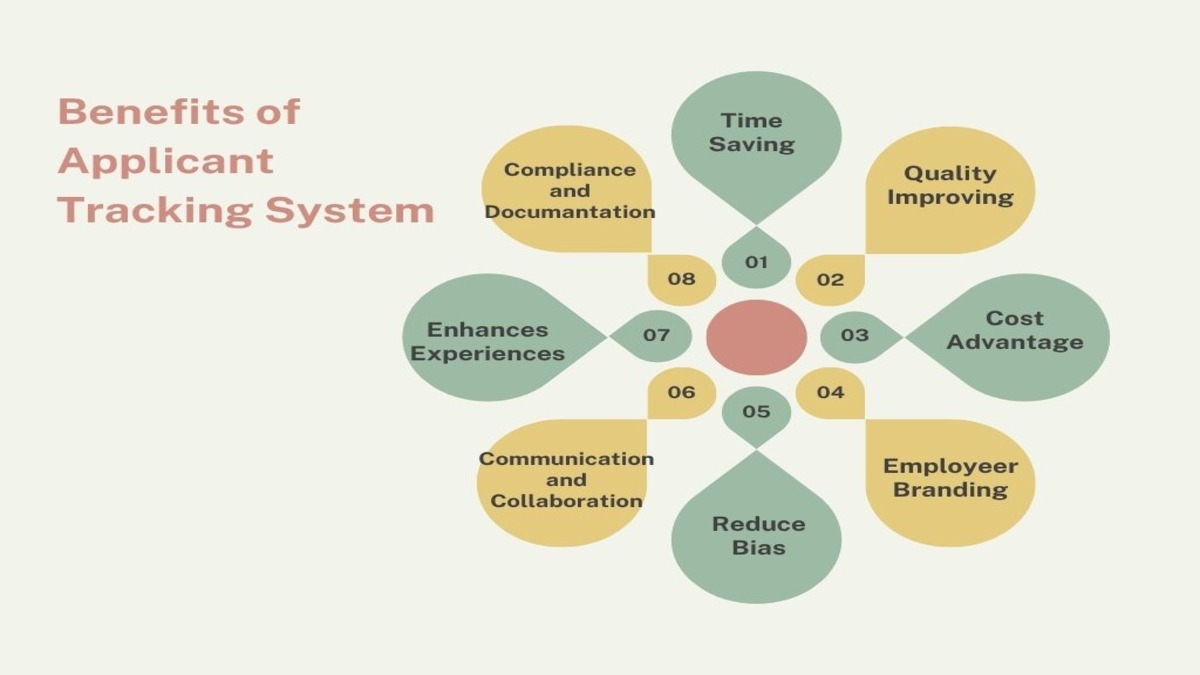
- Saves Time: Recent research suggests that an effective ATS can reduce the typical hiring cycle by approximately 60%.By performing tasks such as posting jobs, screening resumes and scheduling interviews, an ATS shortens task duration, allowing the HR team to redirect efforts to value-adding tasks, which eventually results in faster recruitment process.
- Improves Quality of Hires: ATS functionalities are designed in a way that it results in higher quality of hires. Recruiters have access to a large pool of potential candidates, enabling them to recruit the talent who best meets the job requirements.
- Cost Advantage: There is a positive cost benefit associated with an ATS implementation over a period. Paying the right candidate outweighs spending on inefficient hires, which sometimes results in sizable replacement costs. The job distribution on ATS also minimizes recruitment expenses by reducing external agency fees. Automating repetitive tasks lessens administrative overhead and labour costs, leading to reduced cost per hire.
- Employer Branding: Companies are striving to remain competitive by creating a compelling image as an employer of choice to attract and retain top talent. An ATS not only handles the recruitment function of an organization but also enhances employer branding by highlighting company culture. Branded career pages and personalized communication templates are gateways to create a strong brand identity and ensure positive candidate experience.
- Reduces Bias: Diversity, Equality and Inclusivity (DEI) is gaining traction across geographies. Companies promoting values and a culture of equal employment opportunities are increasingly relying on these systems to encourage fair hiring practices. ATS platforms have built-in features to fortify prejudice and unconscious bias in hiring. Inclusive job description tools, standardized screening criteria and blind hiring features are some capabilities ensuring uniformity in every stage of the recruitment process.
- Centralizes Communication and Collaboration: We know that recruitment is not a unilateral process. It involves inputs from multiple stakeholders to shortlist, select, and hire the best candidate. Recruiters spent half a day pushing papers back and forth to collect feedback and ensure all touchpoints are in the loop with the progress each candidate makes in the recruitment funnel. An ATS expedites this process by providing a shared platform where all stakeholders can perform individual tasks, view candidates progress and share feedback to support hiring decisions instantly.
- Enhances Candidate Experience: An ATS supports the applicant as much as it assists the employer. Previously, many candidates dropped out before completing the application process due to irregular follow-ups and a longer candidate-to-hire process. By simplifying job applications, tracking application status, and self-scheduling interview options all optimized in a mobile app, this system ensures a smooth and transparent hiring journey. A positive experience encourages candidates to share good reviews, even if they aren’t selected.
- Makes Compliance and Documentation Easier: Securing data is not an optional requirement. Companies must adhere to relevant laws and regulations (e.g., GDPR, DPDPA) throughout the hiring process to ensure fair, ethical and legally sound hiring practices. An ATS simplifies compliance by automating record keeping, standardizing workflows, and ensuring periodic compliance with data privacy regulations . It also provides audit trails, legal templates, and real-time compliance alerts, making documentation and regulatory reporting faster and more reliable.
Signs Your Business Needs an ATS
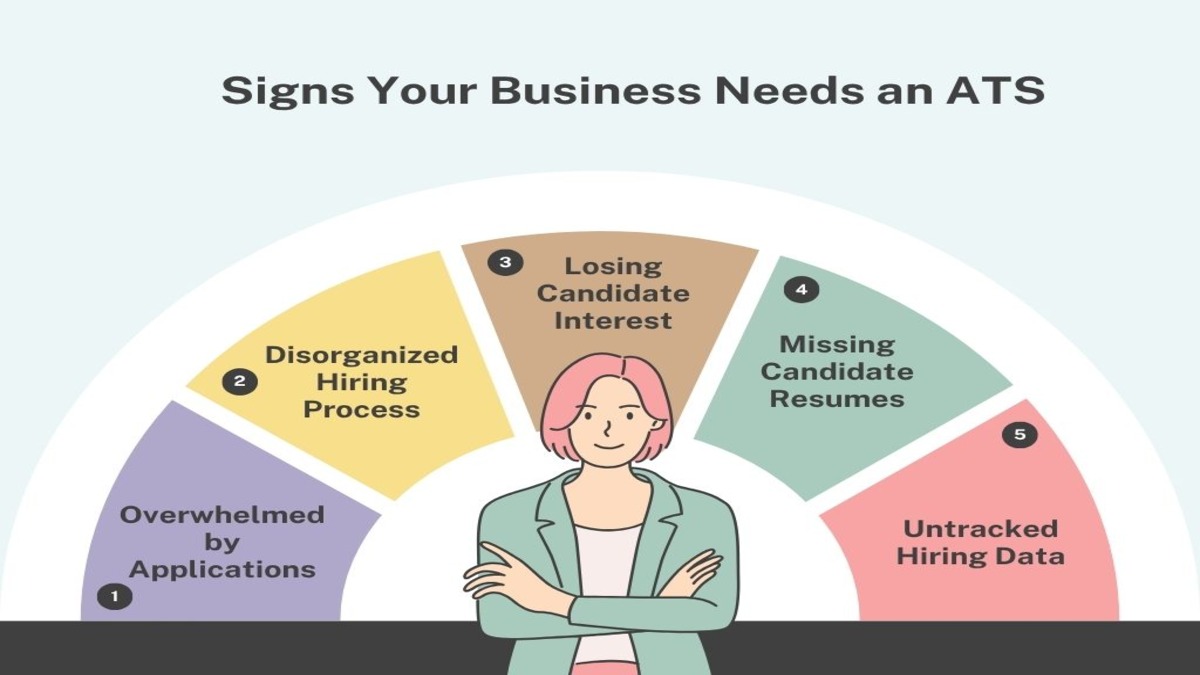
As hiring becomes more complex with the growing competition, businesses struggle while exploring solutions to streamline their process. When is the right time to adopt an ATS?, is a key question. Let’s look at some typical scenarios when undertaking an ATS solution can be a smart move for your enterprise.
If you are struggling with high volume of applications
There are two aspects to this problem. One, your business is scaling, and you need more hands to catch up with the growing demands. More jobs create additional sourcing channels and an increased volume of applications. Second, you are experiencing a higher volume of applications with each job posting, using multiple platforms to reach a wider talent pool. Either way, you receive an unmanageable pile of applications. Manually screening an influx of applications is an administrative burden and an underutilization of HR potential. An ATS can be a feasible alternative which can narrow down the volume to selective, quality candidates with filters like knockout questions and keyword-based rankings.
If your Hiring Practice is Seemingly Disorganized
In organizations with dispersed teams, hiring is stifled due to lack of coordinated communication. Challenges like undefined interviewer roles, separate candidate databases, spreadsheet-based reporting, and excessive email exchanges lead to delays and inefficiency. This unstructured approach increases both time and cost. An ATS centralizes the entire hiring process by enabling teams to access candidate profiles, share updates, collaborate with stakeholders, flag issues, give feedback, and track progress seamlessly on a single platform.
If you are Losing Candidates to Poor Communication
When you identify top talent, remember the second-best candidate also matters. Poor communication can cost you both, as slow responses may lead candidates to lose interest or accept offers elsewhere. Failing to provide feedback to those not selected can damage your employer brand. Even with one-on-one contact, messages can be missed. An ATS ensures timely, automated communication by sending application acknowledgements, status updates, and even interview schedules. Some systems also offer personalized feedback, making the hiring process smoother and more respectful of candidates.
If Resumes are Lost in Shuffle
You saved the resumes of a few candidates to contact later, and then you couldn’t find them when you needed them most. This situation is quite common among hiring teams. If resumes are regularly misplaced in email inboxes, overlooked in shared folders and archives, or buried in paper stacks, it’s a clear sign your current process is two steps forward, one step back. Having an ATS can centralizes all applications in one secure, searchable platform, ensuring no candidate is ever missed.
If you are Facing Difficulty in Tracking Recruitment Metrics
Recruitment metrics are crucial data to see how healthy your hiring strategy is and to optimize the processes. If your team struggles to track key metrics like total application count, candidates interviewed, time-to-hire, source of hire, candidate drop-off rates, or rejection rates, etc., you’re operating without visibility. An ATS with built-in analytics and dashboards can help you measure performance, identify bottlenecks, and improve hiring outcomes.
How to Choose the Right ATS for Your Company
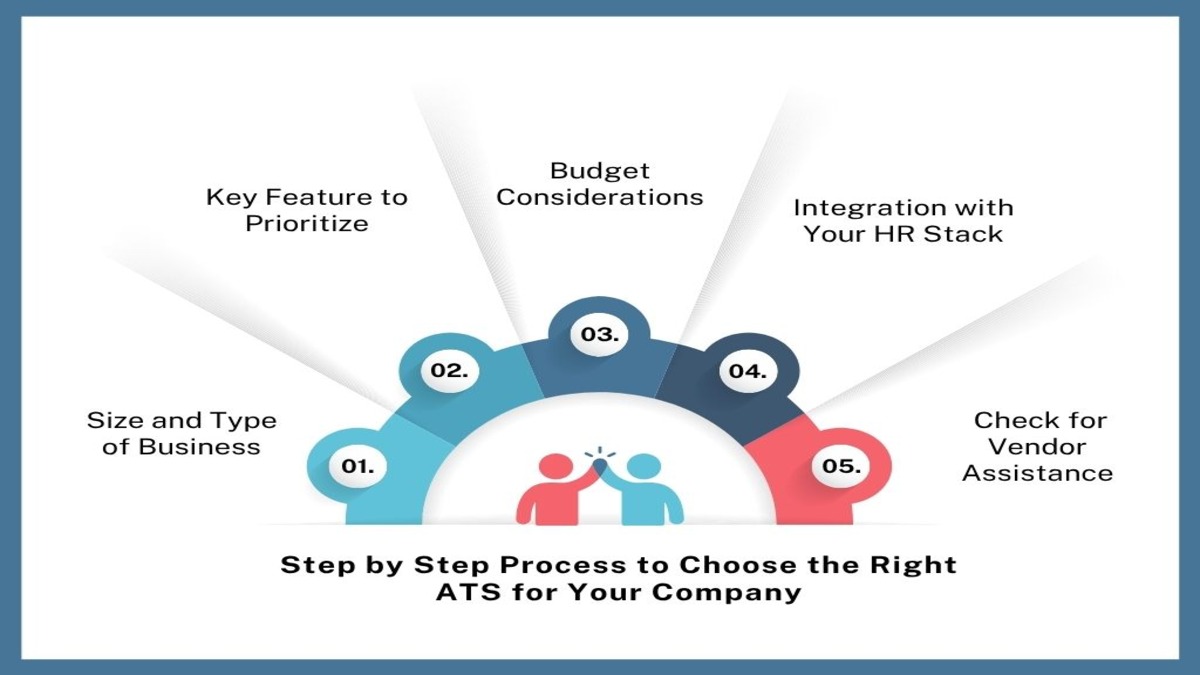
When selecting an Applicant Tracking System for your business, it’s important to carefully evaluate several key factors to ensure the software aligns with your hiring needs and organizational goals. Here’s a breakdown of the key considerations to look for when choosing an ATS:
Size and Type of Business
First and foremost, your company’s type and its size are the most vital determinants while choosing a recruitment solution. For larger businesses, an Enterprise-Level solution is most suitable, as they support complex hiring workflows. Smaller firms or start-ups can go for Basic ATS for more simplicity and affordability. For businesses looking for niche solutions, an Industry-Specific ATS is the best choice since they are built with specific functionalities and workflows relevant to particular industries. E.g., a healthcare-focused ATS might have features managing licences, certifications and compliance with HIPAA regulations.
Key Feature to Prioritize
The next critical factor is the range of features and customization options. Depending on your hiring volume and process intricacies, you might need capabilities like resume parsing, automated candidate screening, interview scheduling and reporting analytics. Custom-built workflows and templates will allow you to tailor the ATS to fit your unique hiring needs.
Budget Considerations
Do not overlook the importance of scalability and pricing. Since tech solutions involve good investments, it’s unwise to be a penny pincher. However, being reasonable with your budget pays off in the long run. Look for transparent pricing plans with no hidden fees and a system to accommodate an increasing number of users and job openings without exorbitant costs.
Integration with Your HR Stack
Moving on, assess the integration capabilities of the ATS. Your system should seamlessly connect with other tools you use, including HR software, job boards, email platforms and calendar apps, so as to create a streamlined recruitment workflow. Ensuring compatibility with your current tech stack reduces administrative work and minimizes errors.
Check for Vendor Assistance
Finally, consider the level of customer support and training offered by the vendor. Reliable support channels, comprehensive onboarding and ongoing training resources can make a huge difference in how quickly your team can leverage the ATS to its optimal capability.
Debunking ATS Myths and Misconceptions
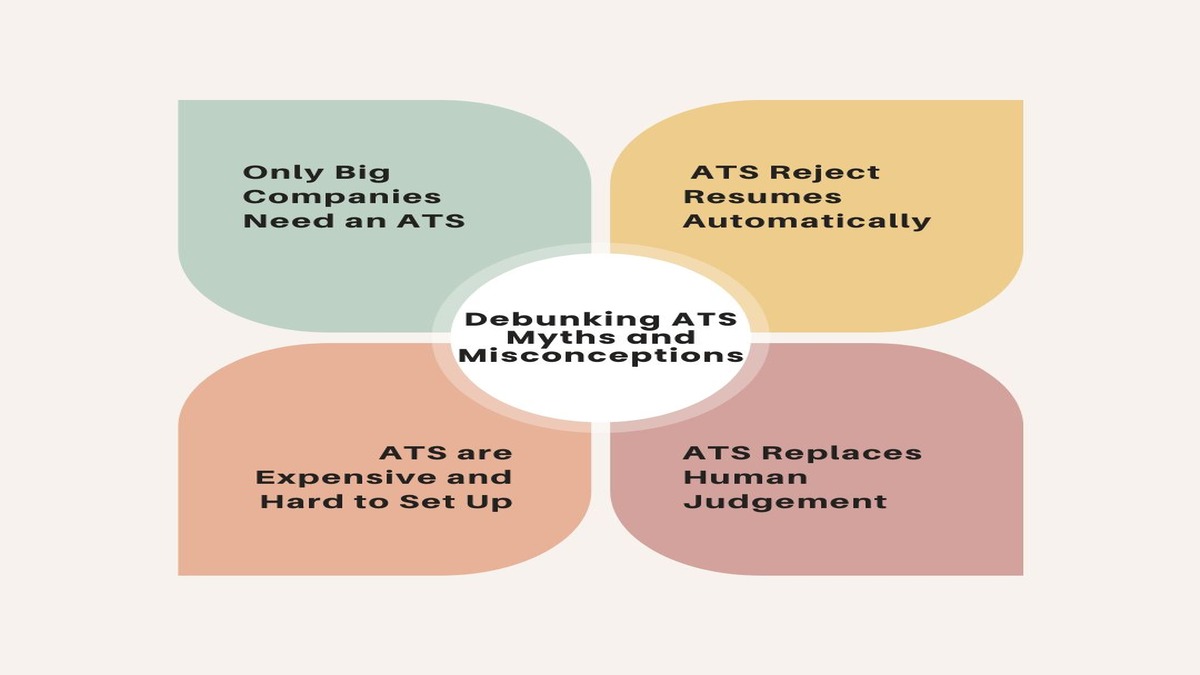
Applicant Tracking System have emerged as an essential tool in modern recruitment, but despite their rife usage, a number of myths and misconceptions still surround them. To get the best out of an ATS and know that it is really doing your hiring process some good, understanding these myths are imperative.
Myth 1: Only Big Companies Need an ATS
Many believe that ATS solutions are designed solely for large corporations with extensive recruitment needs. In reality, ATS platforms are available in different sizes and price points that makes them accessible and beneficial for small to mid-sized companies as well. Regardless of the number of employees you are hiring, the best ATS can streamline your recruitment processes efficiently.
Myth 2: ATS Reject Resumes Automatically
Rumour has it that ATS software disqualifies applicants simply because their resumes lack the “right keywords”. While it’s true that ATS parse resumes using algorithms, most systems are designed to customize search criteria and manually review applications so that no right candidate slips through the cracks.
Myth 3: ATS are Expensive and Hard to Set Up
Many businesses are reluctant to implement an ATS because they believe it involves a complicated setup and a higher investment. Yet, most ATS providers offer user-friendly platforms with flexible pricing, easy integration options, and full-fledged support to ensure a seamless implementation process.
Myth 4: ATS Replaces Human Judgement
An ATS does not substitute the role of recruiters; rather, it assists them in automating repetitive tasks like screening resumes, scheduling interviews, etc. The final hiring decisions still rely on human insight, intuition, and experience. This system improves efficiency while preserving the crucial personal element essential in recruitment.
Future of Applicant Tracking System
In 2025 and beyond, the evolution of Applicant Tracking System will be shaped by the changing trends in HR technology recognized as the key catalyst of personnel management. Next-generation ATS will have rich features, strong security, adaptability and more sophisticated technology, with users enjoying greater agility while placing employee experience at the forefront. Some of them may entail:
Artificial Intelligence and Machine Learning Integration
The future will see AI and ML at the centre, steering the role of ATS in recruitment. AI-driven ATS can bring efficiency gains by screening a larger number of resumes, recognizing patterns in past hiring data, and identifying qualities of high performers to create targeted job descriptions with flexible search criteria. ML algorithms can now scan resumes for relevance irrespective of keywords to counter oversight and reduce bias by anonymizing personal data, improving accuracy.
Predictive Analytics
Going forward, ATS may incorporate more of Big data and Predictive analytics to forecast manpower needs. These tools analyse historical hiring trends and skill gaps, anticipate external hiring needs, suggest talent pipelines for niche roles and flag the risk of attrition. They can also improve job postings and budget allocations by optimizing the source of hire, helping recruiters to prepare in advance with these predictive models and improving the quality of future hires.
Enriched Candidate Experience
To meet the expectations of the next generation workforce, ATS must evolve to provide intuitive and mobile-friendly tools to maximize engagement. By tapping into AI and ML, these systems may offer more personalised job recommendations based on their profile and past applications, optimize interview scheduling, track engagement levels by sentiment analysis, include chat bots for common queries and feedback assisted video interviews for seamless interaction, promising an enhanced experience and reduced drop rates.
Combined benefits of Applicant Tracking System(ATS) and Candidate Relationship Management(CRM)
Today, a standalone ATS may not be sufficient in the changing landscape of recruitment. A motivated workforce with the right skills is the need of the hour and demands a proactive approach. An integrated Candidate Relationship Management solution may offer far-reaching benefits to recruiters and applicants alike, such as building long-term pipeline of specialized roles, nurture relationship with previous applicants, enabling reengagement and reducing sourcing time and cost.
Key Takeaways
In essence, ATS tools greatly reduces recruitment effort which was often overwhelming due to extensive paperwork and correspondence. These systems have since taken over much of the manual burden and revolutionized recruitment to benefit both employers and job seekers.
A clear understanding of their features, benefits, common use cases and prevailing misconceptions can better equip you to make an informed decision for your business. It’s worth noting that the best ATS is not necessarily expensive or feature packed solution but the one that simplify talent acquisition, aligns with your business needs and supports long term growth and initiatives.
Conclusion
Applicant Tracking Systems (ATS) have now become an essential tool for organizations of all sizes willing to streamline and modernize their recruitment strategy. ATS systems have made hiring an efficient, organized,and an intelligent process by delivering automation to mundane tasks, improving candidate experience, enhancing quality of hires, and ensuring compliance.Because of a surge in competition and data-driven recruitment processes, companies that use ATS-based candidates onboarding and management services, particularly with CRM systems, have a greater chance at attracting, engaging, and retaining the best of the talent. The correct ATS investment is not only ensuring the provision with an up-to-date technology, but also a guarantee of a future-ready, dynamic hiring approach that will serve the organization in the long term.
FAQs On Applicant Tracking System To Improve Your Hiring Strategy
What is an Applicant Tracking System (ATS)?
An ATS is recruitment software that automates and manages the hiring process, from posting jobs to tracking candidates and organizing resumes.- Who typically uses an ATS?
Recruiters, hiring managers, HR professionals, IT admins, and recruitment agencies across all industries use ATS platforms. - Is an ATS only for large companies?
While many Fortune 500 companies use ATS, modern cloud-based systems are also affordable and beneficial for small and mid-sized businesses. - How is an ATS different from a CRM?
An ATS focuses on managing job applications and hiring workflows, while a CRM (Candidate Relationship Management) helps build and nurture long-term relationships with potential candidates. - What are the key features of a modern ATS?
Features include resume parsing, automated job posting, interview scheduling, candidate scoring, team collaboration tools, analytics, and system integrations. - What benefits does an ATS offer?
It saves time, reduces hiring costs, improves candidate quality, enhances employer branding, supports compliance, and boosts candidate experience. - When should a company consider using an ATS?
If you’re overwhelmed by resumes, losing track of candidates, struggling with communication, or lacking hiring insights—it’s time for an ATS. - Are ATS platforms difficult to implement?
Most modern ATS tools are user-friendly, cloud-based, and offer quick setup with vendor support and training. - Does an ATS automatically reject resumes?
ATS systems help filter and organize applications based on criteria, but final decisions are still made by recruiters. - What’s the future of ATS technology?
Future systems will focus more on AI, machine learning, predictive analytics, and mobile-friendly interfaces to improve hiring speed and accuracy.

